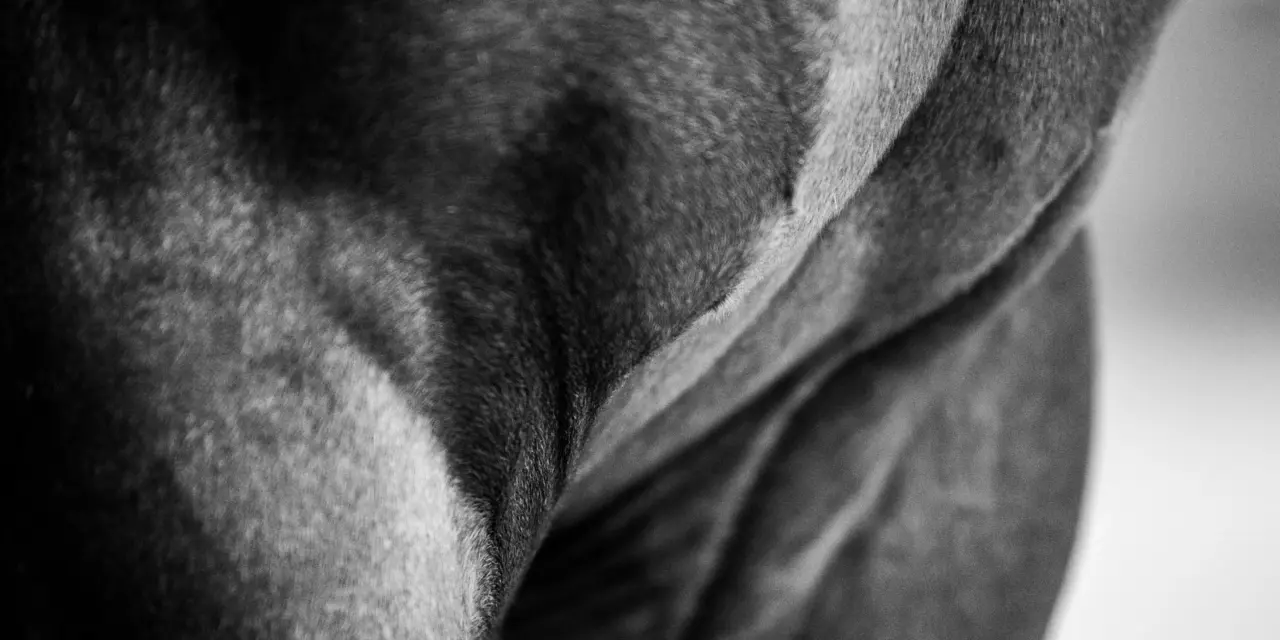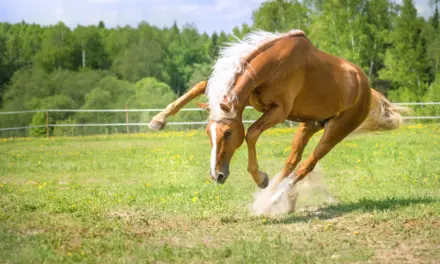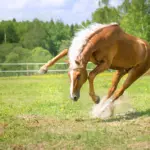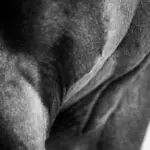- Basic muscle function: muscles convert chemical energy (ATP) into mechanical work, enabling movement, posture and heat production.
- Structure of the muscle fibre: muscle fibres consist of myofibrils, which contain the contractile proteins actin and myosin that are capable of contraction.
- Energy sources: muscles use creatine phosphate, glucose, fatty acids, and lactate – depending on the duration of the exertion and oxygen supply.
- Unique features in horses: horses have many fast-contracting fibres, large glycogen stores, and a highly efficient lactate management system.
- Training and adaptation: exertion thickens existing muscle fibres, improves metabolism, and adapts fibre types – without the creation of new muscle fibres.
What is muscle physiology and why is it important?
Muscle tissue is one of the most active tissues in the horse’s body, performing far more tasks than just locomotion. It acts as a central organ for energy metabolism, temperature regulation, and posture. For horse owners, trainers, and veterinarians, understanding muscle physiology is crucial to optimising training, feeding, and healthcare.
The fundamental functions of muscles
Muscles are biological powerhouses that convert chemical energy in the form of ATP (adenosine triphosphate) into mechanical work. This energy conversion not only enables movement and locomotion in the horse but also stabilises posture and balance. Additionally, muscles serve as a key organ for heat production, helping to regulate body temperature effectively.
How muscle fibres work: from the cell to movement
The structure of a muscle fibre
A muscle consists of countless muscle fibres, which are bundled together and interwoven with a network of blood vessels, nerves, and connective tissue. Each muscle fibre is a specialised, elongated cell with multiple nuclei.
Inside each muscle fibre are the myofibrils – highly organised structures made up of the contractile protein’s actin and myosin. These proteins are organised into functional units called sarcomeres, where the actual muscle contraction takes place.
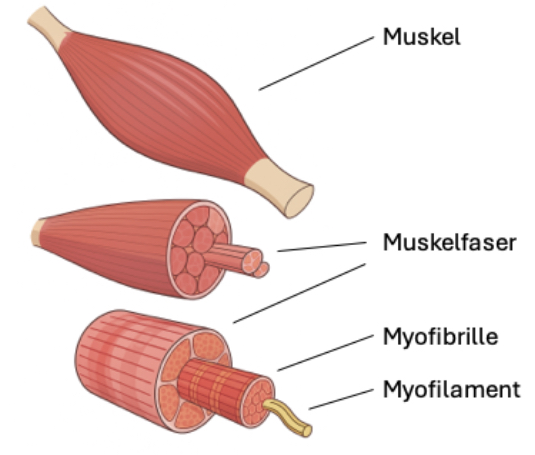
The sliding filament model: how muscles produce movement
Muscle contraction is based on the sliding filament model. Using energy, the myosin filaments slide along the actin filaments, causing the sarcomere to shorten and, in turn, the entire muscle fibre to contract.
The contraction process begins with electrical impulses that travel through the nerves to the muscle. At the motor end plate, this electrical signal is chemically translated, triggering the release of calcium from the sarcoplasmic reticulum. This calcium allows the myosin heads to bind to actin and, with the help of ATP, slide the filaments past each other. Without enough ATP, the muscle cannot detach and relax, a condition that, in the case of energy depletion, can lead to painful muscle tightness.

Energy supply: the three pathways of muscle energy
The energy supply of muscles is flexible and adapts intelligently to the demands of the situation. At rest and under moderate load, metabolism predominantly occurs aerobically – with oxygen. During this process, glucose and fatty acids are completely broken down into carbon dioxide and water, which is very efficient but results in a slower energy turnover. However, this aerobic pathway enables long endurance efforts without rapid fatigue.
During intense, short bursts of exertion, the muscle relies on anaerobic metabolism, where glucose is broken down without oxygen, producing lactate as a by-product. This pathway provides energy much more quickly but has limited capacity and leads to lactate accumulation in the muscle.
For dynamic movements like jumping or quick starts, the creatine phosphate system is available, providing stored energy instantly, but only for a few seconds. This system is particularly important for the typical flight responses in horses.
Unique features of equine musculature
Horses have evolved some unique traits that make them exceptional athletes. They have a particularly high proportion of fast-contracting type IIa muscle fibres, which enable quick, powerful movements – a perfect adaptation for flight responses and athletic performance. These fibres can contract rapidly while also sustaining work over longer periods.
In addition, horses have large glycogen stores in their muscles, which provide extensive energy reserves and enable long endurance efforts without immediate external energy intake. Like other mammals, horses are likely able to transport lactate between different muscle groups and organs, using it as an additional energy source.
Training and adaptation: how muscles become stronger
An important fact for all horse owners: training does not lead to the formation of new muscle fibres, but to targeted adaptations of existing structures. Through regular training, existing fibres become thicker, a process known as hypertrophy. At the same time, metabolism improves through increased enzyme activity and optimised energy supply. To some extent, even fibre-type adaptation can occur, where different fibre types partially transform. Additionally, capillarisation improves, optimising blood supply and increasing oxygen and nutrient transport to the muscles.
What this means for horse training
Understanding muscle physiology helps with:
- Effective training plans: adapting to the energy systems
- Recovery times: considering metabolic recovery
- Feeding strategies: supporting the different energy systems
- Injury prevention: avoiding over-training and energy depletion
Conclusion: muscle physiology as the foundation of successful horse management
The muscle physiology of the horse is a complex yet fascinating system of perfectly coordinated processes. Understanding muscle structure, energy supply, and adaptation mechanisms is key to successful training, optimal feeding, and long-term horse health.
Only by understanding the biological fundamentals can you help your horse reach its full potential while ensuring its health and well-being.
- How horse muscles move: muscle contraction in detail - 26. August 2025
- The unique musculature of horses: Powerhouse for speed and stamina - 26. August 2025
- Muscle physiology in horses: structure and function of the muscles - 26. August 2025

